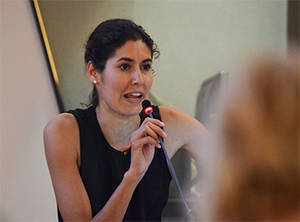Saline agriculture in a context of water scarcity and the establishment of a WASAG working group

FAO HQ, Rome | 28 May 2018
The global population is expected to reach 9.1 billion in 2050 and a 50 percent surge in food demand is expected by that time. In addition, agriculture is by far the biggest user of water, accounting for almost 70 percent of all withdrawals globally and up to 95 percent in some developing countries, while competition with other sectors for water is increasing.
This calls for alternative sources of water and land on which to engage in agricultural activities. There is no shortage of seawater: almost 97 percent of the water on earth is in the oceans. Land can also be plentiful if we consider the drylands, which cover over 40 percent of the earth’s total land surface and span globally 100 developing countries with a growing population currently of more than 2.5 billion people.

With sea level rise due to climate change, salinity intrusion will increase, reaching more to our coastal and inland environments, affecting their agriculture potential. The impacts of salt-affected areas on agriculture are numerous, and can affect not only agricultural production, but also the living conditions of farmers, the economy at different levels, the balance of ecosystems, and the quality of natural resources. The most important impacts that salt-affected soils can have on crop production include the decline in crop yields but also a decline in soil productivity, an increased need for external inputs including water, reduced water use efficiency, and in some cases, no longer being able to use the affected lands for agricultural purposes. While the traditional approach is to fight salinity, and rehabilitate soils, which requires additional water to leach salts, a more sustainable approach is to adjust farming systems to higher salinity levels in affected areas. Soil salinity management is key in sustaining productivity.

The opportunity to practice a new type of agriculture, i.e. crop production, livestock and aquaculture, in such saline environments is arising. Saline agriculture consists of developing systems suitable for saline environments, using the capacity of certain plants to grow under saline conditions and the ability to practice other agricultural activities which combine the use of saline soil, saline water and improved soil and water management.
The Global Framework on Water Scarcity in Agriculture (WASAG) brings together different sectors committed to finding solutions to the challenges posed by climate change and a growing world population to sustainable agriculture production, in a context of water scarcity. WASAG currently has more than 50 partners and 6 Working Groups on: drought preparedness, water and migration, financing mechanisms, water and nutrition, sustainable agriculture water use and communication strategy. A new Working Group is now being considered, to explore the emerging opportunities offered by saline agriculture, in a context of water scarcity.
Consultation Meeting on the Establishment of a WASAG Working Group

The following WASAG partners are potential members of the Working Group: International Centre for Biosaline Agriculture (ICBA), International Center for Agricultural Research in the Dry Areas (ICARDA), International Fund for Agricultural Development (IFAD), United Nations Convention to Combat Desertification Secretariat (UNCCD), International Water Management Institute (IWMI), International Commission on Irrigation & Drainage (ICID) and FAO. Others are expected to join.
As other working groups, this one will serve as an umbrella to help partners to identify ways of cooperation and collaboration in a global context. This will maximize synergies thus addressing the challenges and opportunities offered by saline agriculture.
FAO and ICBA have signed a Memorandum of Understanding (MoU) in March 2015 which identified areas for collaboration and since then, a number of activities have been jointly organized by the two organizations. Subsequently, ICBA also signed an Letter of Agreement with FAO Regional Office for Near East and North Africa (RNE) in November 2015 to Support the RNE Water Scarcity Initiative work plan within the domains of Protected Agriculture in the Gulf Cooperation Council (GCC) Countries and of Agricultural Drought Monitoring in the Near East and North Africa (NENA) Region.

A consultation meeting took place on 28 May 2018 at the FAO headquarters with the participation of the above-mentioned WASAG members and other stakeholders and partners with a prospective interest in saline agriculture.
The meeting aimed to initiate the conversation on the relevance of saline agriculture within the framework of WASAG and the merits to establish a WASAG Working Group on Saline Agriculture. In order to identify related FAO activities and enhance synergies, an FAO Task Force on Saline Agriculture has been established with the aim coordinating FAO’s related work and its contributions to a prospective Working Group.
The main objectives of the consultation meeting were:
- Sharing experiences on saline agriculture,
- Identifying opportunities and challenges on saline agriculture at large scale and discussing options to address these challenges,
- Enhancing and encouraging cooperation and collaboration among various partners, and
- Discussing the establishment of a WASAG Working Group on Saline Agriculture.
